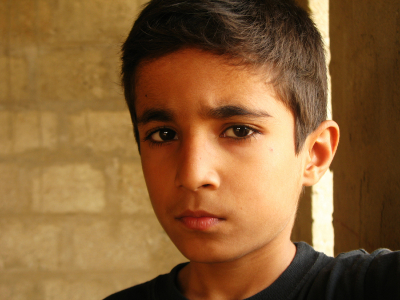Childhood Illness Onset Produces Worse Outcomes
There is more evidence that childhood onset of bipolar illness means a more difficult course of illness. In a study published in World Psychiatry in 2012, Baldessarini et al. pooled data from 1,665 adult patients with bipolar I disorder at seven international sites and compared their family history of bipolar disorder, outcomes, and age of onset. Among these patients, 5% had onset in childhood (age <12 years), 28% during adolescence (12-18), and 53% during a peak period from age 15-25.
Patients who were younger at onset had more episodes per year, more co-morbidities, and a greater likelihood of a family history of the illness. Patients who were older at onset were more likely to have positive functional outcomes in adulthood, like being employed, living independently, and having a family.
Youth at High Risk for Bipolar Disorder Show White Matter Tract Abnormalities
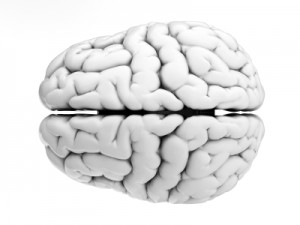 At a recent scientific conference, researcher Donna Roybal presented research showing that children at high risk of developing bipolar disorder due to a positive family history of the illness had some abnormalities in important white matter tracts in the brain. Prior to illness onset, there was increased fractional anisotropy (FA), a sign of white matter integrity, but following the onset of full-blown bipolar illness there were decreases in FA.
At a recent scientific conference, researcher Donna Roybal presented research showing that children at high risk of developing bipolar disorder due to a positive family history of the illness had some abnormalities in important white matter tracts in the brain. Prior to illness onset, there was increased fractional anisotropy (FA), a sign of white matter integrity, but following the onset of full-blown bipolar illness there were decreases in FA.
Roybal postulated that these findings show an increased connectivity of brain areas prior to illness onset, but some erosion of the white matter tracts with illness progression.
Editor’s Note: It will be critical to replicate these findings in order to better define who is at highest risk for bipolar disorder so that attempts at prevention can be explored.
NAC Is Not Effective In Children With Trichotillomania As It Is In Adults
N-acetylcysteine (NAC) is a drug available over-the-counter in health food stores that is effective in a variety of disorders, including trichotillomania (compulsive hair-pulling) in adults. Researcher Michael Block of Yale University reports that, in contrast to NAC’s robust effects in adults, the drug was not effective in children with trichotillomania aged 8 to 17. However, behavior therapy has been reported to be effective in both adults and children.
Editor’s Note: Why a drug that is so effective for trichotillomania in adults does not work well or at all in children is not clear. It is even more perplexing given that NAC has shown robust effects on some other childhood disorders, such as irritability and stereotypy in children with autism. However, if this discrepancy and other differences in pharmacological response across demographics are replicated, the reasons for differential response should be investigated.
As many researchers have emphasized, kids are not just shorter adults, but might have entirely different brains that are in a different stage of development. Extrapolating the therapeutic effects that occur in adults to children may not always be a valid strategy.
NAC Improves Irritability and Repetitive Behaviors in Children with Autism
 The antioxidant N-acetylcysteine (NAC), which can be found in health food stores, seems to be effective for irritability and repetitive behaviors in children with autism. In a small controlled study that was published by Hardan et al. in the journal Biological Psychiatry in 2012, 33 mostly male children with autism (aged 3-12 years) received either placebo or NAC at doses of 900mg daily for 4 weeks, followed by 900mg twice daily for 4 weeks, then 900mg three times a day for 4 weeks. Beginning in week 4, the children receiving NAC showed significantly improved irritability scores, and a trend for improvement in repetitive behaviors.
The antioxidant N-acetylcysteine (NAC), which can be found in health food stores, seems to be effective for irritability and repetitive behaviors in children with autism. In a small controlled study that was published by Hardan et al. in the journal Biological Psychiatry in 2012, 33 mostly male children with autism (aged 3-12 years) received either placebo or NAC at doses of 900mg daily for 4 weeks, followed by 900mg twice daily for 4 weeks, then 900mg three times a day for 4 weeks. Beginning in week 4, the children receiving NAC showed significantly improved irritability scores, and a trend for improvement in repetitive behaviors.
Social responsiveness did not improve significantly, but the children receiving NAC did show some improvement in some areas of social behavior, such as social cognition and autism mannerisms.
There were few side effects associated with NAC. The most significant were gastrointestinal side effects, but these were mild, especially when compared with the side effects associated with FDA-approved treatments for autism, such as the atypical antipsychotics risperidone and aripiprazole.
The authors of the study plan to expand their research in a study of more than 100 children with autism.
Editor’s Note: It should we previously summarized this study in the BNN based on research presented by Fung et al. at a meeting of the American Academy of Child and Adolescent Psychiatry two years ago. The study has now been published.
Intranasal Ketamine Helps Some Kids with Bipolar Disorder
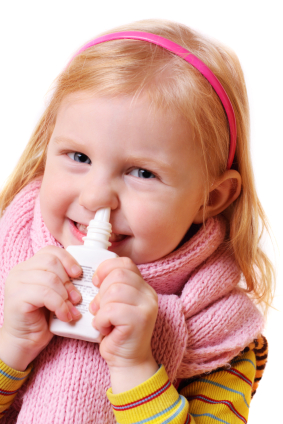 The anesthetic ketamine given intranasally may help children with a certain type of bipolar disorder. In an article published in the Journal of Affective Disorders in 2013, Demetri Papolos et al. reported seeing marked improvement in a subgroup of 12 children aged 6 to 19 years of age who were nonresponsive to the usual treatment regimens of lithium, mood stabilizers, and antipsychotics. Papolos has described these children as having the “fear of harm (FOH) subtype.” In addition to having typical mood swings, these children also have a fear of aggression, separation anxiety, sleep and circadian rhythm disorders, nightmares, thermoregulatory problems, and carbohydrate craving.
The anesthetic ketamine given intranasally may help children with a certain type of bipolar disorder. In an article published in the Journal of Affective Disorders in 2013, Demetri Papolos et al. reported seeing marked improvement in a subgroup of 12 children aged 6 to 19 years of age who were nonresponsive to the usual treatment regimens of lithium, mood stabilizers, and antipsychotics. Papolos has described these children as having the “fear of harm (FOH) subtype.” In addition to having typical mood swings, these children also have a fear of aggression, separation anxiety, sleep and circadian rhythm disorders, nightmares, thermoregulatory problems, and carbohydrate craving.
Ketamine was given as an intranasal spray using an inhaler in 10mg doses. Doses were increased until the targeted symptoms remitted. Average doses ranged from 30mg to 120mg, given every 3 to 7 days. All symptom areas including depression and mania improved markedly, usually within a few hours, and this improvement lasted 3 to 4 days. Four types of aggression (measured on the Overt Aggression Scale) decreased significantly.
There were some dissociative side effects that were usually mild to moderate, but occasionally severe. They resolved spontaneously, usually within the first hour after treatment, and there appeared to be tolerance to them following repeated administration.
The authors urged caution until findings from these cases are confirmed by more controlled studies, but they concluded that the magnitude and rapidity of effects in these children with treatment resistant bipolar disorder suggested effectiveness and safety.
Harsh Physical Punishment is Associated with Mood and Other Disorders
Physical punishment of children has long been a controversial subject. A 2012 article by Afifi et al. in the journal Pediatrics suggests that having experienced harsh physical punishment during childhood is associated with mood disorders, anxiety disorders, substance abuse and dependence, and personality disorders in adulthood.
In this study harsh physical punishment included pushing, grabbing, shoving, slapping, or hitting. Participants who had experienced more severe maltreatment in childhood (including physical abuse, sexual abuse, emotional abuse, physical neglect, emotional neglect, and exposure to violence between intimate partners) were excluded from the study, and the results were adjusted for sociodemographic variables and family history of dysfunction, suggesting that physical punishment was the mediator of these effects.
Choline Treatment For Pregnant Mothers And Newborns Improves Babies’ Cognition and Normalizes a Risk Factor for Schizophrenia
Deficiencies in GABA inhibition have been linked to the risk of schizophrenia (and perhaps bipolar disorder). GABA receptors are initially excitatory but switch to being inhibitory early in life. Choline derived from phosphatidylcholine or from eggs and meat in the diet is important in increasing GABA receptor development and maturity.
Ross et al. reported this year in the American Journal of Psychiatry that in a placebo-controlled study in which mothers took phosphatidylcholine in the last 2 trimesters of pregnancy (at doses of 3,600mg in the morning plus 2,700mg in the evening) and infants took 100mg/day for 12 weeks, the infants who received choline showed better neuronal inhibition than infants who did not receive choline on a P50 test of auditory evoked potential, in which the brain’s response to a series of beeps is recorded. An overactive P50 response is a sign of deficiencies in GABA inhibition.
In infants with a common gene variant in the alpha 7 nicotinic receptor that makes it function less well (which also may be a risk factor for the development of schizophrenia), the choline regimen normalized the P50 test, while placebo had no effect. However, in a recent study by Cabranes et al. published in Psychiatry Research, there was no association of the alpha 7 gene variant and schizophrenia or bipolar disorder, although patients with bipolar disorder and patients with schizophrenia did perform differently on the P50 evoked potential test than controls did.
Editor’s Note: In an editorial by Judy Rapoport that accompanied the Ross et al. study, the difficulty of using the findings in clinical practice are discussed. Meck et al. showed in 1999 that choline supplementation enhanced spatial memory, and in several cases nutritional supplements can have beneficial effects on the brain. Rapoport notes the success of perinatal folate in preventing neural tube defects and the likelihood that Vitamin D supplementation can prevent some cases of schizophrenia.
However, extrapolating the choline findings of Ross et al. to clinical practice, especially given the lack of association of the alpha 7 gene variation to psychiatric illness in the study by Cabranes et al., might be premature. Instead, Rapoport recommends a good diet and prevention of infection as first steps for treatment. Choline supplementation would be roughly equivalent to three eggs a day.
Vitamin D3 Is Low In Children And Adolescents With Mania, But Supplements Help
Vitamin D3 is low in children and adolescents with mania, but taking a supplement could help. Vitamin D3, which we absorb via food and sunlight, is converted by the liver to a form called 25-OH-D. In a small study, Elif Sikoglu et al. found that children and teens with mania had lower levels of 25-OH-D in their blood compared to typically developing youth of similar ages. This deficit was associated with lower brain GABA levels measured with magnetic resonance spectroscopy. GABA dysfunction has been implicated in the manic phase of bipolar disorder. An 8-week trial of Vitamin D3 supplements significantly reduced manic symptoms and tended to increase GABA levels.
Editor’s Note: Other data have suggested that children with psychosis have low Vitamin D3, and in a recent clinical trial in adults, Vitamin D3 supplementation improved antidepressant response more than placebo. Many children in the US are Vitamin D deficient. Test them and, if necessary, treat them, especially if they have bipolar disorder.
Irritability and Unipolar Depression in Kids
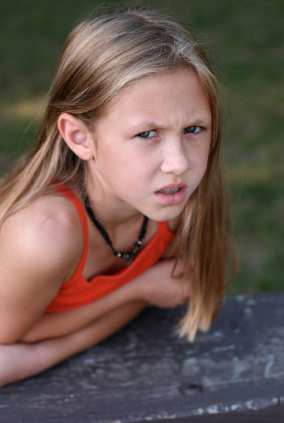 At the 2012 Pediatric Bipolar conference sponsored by the Ryan Licht Sang Foundation, Graham J. Emslie gave a talk on irritable mood and unipolar depression in youth.
At the 2012 Pediatric Bipolar conference sponsored by the Ryan Licht Sang Foundation, Graham J. Emslie gave a talk on irritable mood and unipolar depression in youth.
Irritability is common in unipolar depression. Emslie suggested that if a child’s irritability is severe and the child destroys objects and denies being irritable, bipolar disorder might be likely. Irritable unipolar depressed children will generally acknowledge being irritable.
Emslie reported that 96% of youth in his randomized placebo-controlled studies of selective serotonin reuptake inhibitor antidepressants (SSRIs) recovered from their unipolar depression, but 46.6% relapsed. Those children with residual depressive symptoms were at double the risk for relapse into a depression compared to those who remitted completely. In those without residual depressive symptoms, there were no relapses if the children stayed on their medications.
Children were excluded from Emslie’s study if they had a positive family history of bipolar disorder, and perhaps because of this, very few participants switched into mania with antidepressants.
MORAL: Treat to remission and stay on the antidepressants associated with the remission. This has previously been found to be important for adults as well. (Emslie added that he would advise that a child stay on an antidepressant for at least a year after a remission was achieved, and longer if the child had difficulties in academic performance or relationships at school.)
Children with unipolar major depression who had a few manic symptoms at a subsyndromal level had poorer outcomes in Emslie’s study. The presence of subsyndromal manic symptoms in bipolar depressed adults is a risk factor for increased switching into mania when antidepressants are added to a mood stabilizer.
Comorbid substance abuse is another risk factor for poor outcome in childhood depression.
White Matter Abnormalities in the Brain Predict Onset of Psychosis
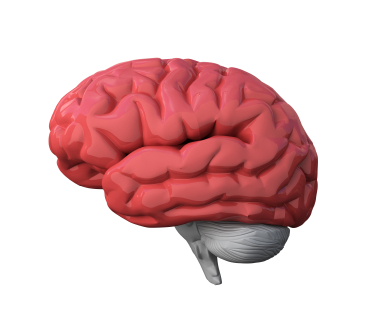 At the 2012 meeting of the American Academy of Child and Adolescent Psychiatry (AACAP), Carrie E. Bearden presented data from a study that predicted conversion to psychosis in at-risk youth (those who have prodromal symptoms or a particular genetic mutation that leads to psychosis) by observing white matter abnormalities.
At the 2012 meeting of the American Academy of Child and Adolescent Psychiatry (AACAP), Carrie E. Bearden presented data from a study that predicted conversion to psychosis in at-risk youth (those who have prodromal symptoms or a particular genetic mutation that leads to psychosis) by observing white matter abnormalities.
Bearden found that the degree of white matter abnormality seen during magnetic resonance imaging (MRI) was proportional to the degree of cognitive deficit in patients who subsequently developed a first episode of psychosis. The white matter abnormalities were seen particularly in the superior longitudinal fasciculus (SLF) and were associated with increased severity of symptomatology. The overall degree of white matter alteration was also significantly related to clinical outcome 15 months later.
Editor’s Note: The SLF is a major neuronal conduit between prefrontal cortical systems, which are responsible for cognition and planning, and the parietal cortex, which is responsible for spatial abilities. Disruption of this fiber track has been related to difficulties in social cognition and “theory of mind” concepts, like inferring what others might be thinking.

